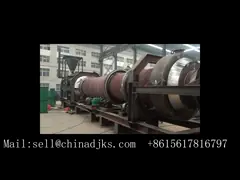Graphite Ore Mining Production Line
Add to Cart
Graphite is a form of pure carbon that normally occurs as black crystal flakes and masses. It has important properties, such as chemical inertness, thermal stability, high electrical conductivity, and lubricity (slipperiness) that make it suitable for many industrial applications, including electronics, lubricants, metallurgy, and steelmaking. For some of these uses, no suitable substitutes are available. Steelmaking and refractory applications in metallurgy use the largest amount of produced graphite; however, emerging technology uses in large-scale fuel cell, battery, and lightweight high-strength composite applications could substantially increase world demand for graphite.
Graphite ore crushing
(1) Raw ore feeding particle size: 300~500mm;
(2) Final product particle size: 10~20mm;
(3) The commonly used crushing process is a two-stage open circuit or a three-stage open circuit;
(4) The equipment is a jaw crusher for primary crushing, a cone crusher, or a hammer crusher for final crushing.
- Crucibles Parts: melting, reduction, slag reduction, sampling
- Aluminum Processing: sidewalls, extrusion guides, run out tables, canister discs & blanks
- Boats, Trays & Chills: heat treating, sintering, sand molds
- Furnace Parts: induction, vacuum, fixtures, plates, rails, elements, spacers, carbon/carbon components, heating rods, holders, contacts
- Glass Handling: carbon/carbon parts: take-out inserts, lehr bar applications, guides, plates, pusher bars, stacker pads, dead plates
- Molds: thermal welding, hot pressing, fused refractories, castings
Graphite ore flotation separation
(1) Collector: kerosene and diesel are more popular options;
(2) Foaming agent: the most popular option is 2# oil;
(3) Regulator: If the graphite contains pyrite, lime is often added to suppress it. When gangue contains quartz, mica, or silicate minerals, sodium carboxymethyl cellulose, water glass, or a mixture of these two agents in proportion are often used to inhibit gangue;
(4) Equipment: Mostly use a special flotation machine or a special flotation column for graphite ore.
[Introduction]: The graphite mining processes are mainly the gravity separation process, froth flotation process, electric separation process, and the combination process. And froth flotation process is the main graphite ore processing method. Generally, 90%-97% grade of graphite concentrate can be obtained after the graphite flotation process. For the different graphite ore properties, the graphite mining processes are also different.
[Application]: Graphite mining processes are mainly applied in the various graphite ore with different types of crystalline and graphite ore accompanied with silicate minerals, such as mica and pyrite.




